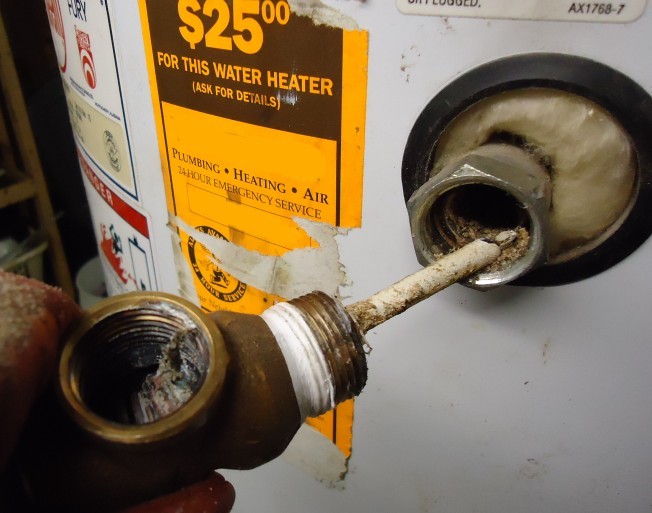Essential Advice on Caring for Your Home's Hot Water SystemProfessional Advice for Maintaining Your Home's Hot Water System
Essential Advice on Caring for Your Home's Hot Water SystemProfessional Advice for Maintaining Your Home's Hot Water System
Blog Article
Do you find yourself looking for information and facts on What Kind of Maintenance Do Water Heaters Need??

Warm water is important for day-to-day comfort, whether it's for a revitalizing shower or washing meals. To ensure your warm water system runs efficiently and lasts longer, normal maintenance is vital. This short article gives useful ideas and insights on exactly how to keep your home's hot water system to stay clear of disruptions and expensive fixings.
Introduction
Keeping your home's hot water system may appear challenging, however with a few basic actions, you can guarantee it runs smoothly for years to find. This overview covers whatever from recognizing your warm water system to do it yourself maintenance tips and knowing when to contact expert assistance.
Relevance of Preserving Your Warm Water System
Regular maintenance not just expands the lifespan of your warm water system yet also ensures it runs successfully. Disregarding maintenance can result in reduced performance, greater energy bills, and even early failing of the system.
Signs Your Hot Water System Requirements Upkeep
Recognizing when your warm water system requires attention can avoid major issues. Look out for signs such as inconsistent water temperature level, weird sounds from the heating system, or rustic water.
Purging the Water Heater
Flushing your water heater removes debris build-up, boosting effectiveness and extending its life.
Checking and Replacing Anode Rods
Anode poles protect against deterioration inside the container. Checking and replacing them when worn out is crucial.
Complex Concerns Calling For Expert Assistance
Examples consist of significant leaks, electrical problems, or if your hot water heater is constantly underperforming.
Routine Professional Upkeep Perks
Expert maintenance can consist of complete inspections, tune-ups, and making certain conformity with safety and security requirements.
Inspecting and Readjusting Temperature Level Settings
Readjusting the temperature level settings makes certain ideal performance and safety and security.
DIY Tips for Maintenance
You can execute numerous upkeep tasks on your own to keep your warm water system in top condition.
Looking for Leaks
Regularly examine pipes and links for leakages, as these can result in water damage and greater bills.
Comprehending Your Hot Water System
Prior to diving into upkeep tasks, it's handy to comprehend the basic components of your warm water system. Usually, this consists of the hot water heater itself, pipelines, anode rods, and temperature controls.
Month-to-month Upkeep Tasks
Regular regular monthly checks can help capture small problems before they rise.
Testing Stress Relief Valves
Checking the stress relief valve guarantees it functions appropriately and prevents extreme pressure accumulation.
Shielding Pipes
Insulating warm water pipelines decreases warmth loss and can save energy.
When to Call a Specialist
While DIY upkeep is beneficial, some issues need specialist knowledge.
Verdict
Routine upkeep of your home's hot water system is vital for performance, long life, and cost savings. By complying with these pointers and knowing when to look for specialist aid, you can ensure a reputable supply of warm water without unanticipated disruptions.
How to Maintain an Instant Hot Water Heater
Before tinkering with your hot water heater, make sure that it’s not powered on. You also have to turn off the main circuit breaker and shut off the main gas line to prevent accidents. Also turn off the water valves connected to your unit to prevent water from flowing into and out of the appliance. 2. When you’re done, you have to detach the purge valves’ caps. These look like the letter “T” and are situated on either side of the water valves. Doing so will release any pressure that has accumulated inside the valves while at the same time avoid hot water from shooting out and burning your skin. 3. When the purge valves’ caps are removed, you have to connect your hosing lines to the valves. Your unit should have come with three hoses but if it didn’t, you can purchase these things from any hardware or home repair shops. You can also get them from retail stores that sell water heating systems. Read the user’s manual and follow it to complete this task properly. When the hosing lines are connected, open the purge port’s valves. 4. You should never use harsh chemical cleaners or solutions when cleaning your unit. Make use of white vinegar instead. It should be undiluted and you’ll probably use about 2 gallons. 5. Now flush your water heater. This task should probably take about 40 minutes. We can’t give you specific directions for this because the procedure is carried out depending on the type, model and brand of your heater. With that being said, refer to the user’s manual. 6. When you’re done draining the unit, you have to turn off the purge port valves again. Remove the hosing lines that you earlier installed on each of the water valves. Put the valve caps (purge port) back in their respective places and be very careful so as not to damage the rubber discs that are found inside these caps. 7. Now that everything’s back in place, check your user’s manual again to find out how to reactivate your water heating system. 8. Once it is working, turn one of your hot water faucets on just to let air pass through the heater’s water supply pipes. Leave the tap on until water flows smoothly out of it. https://www.orrplumbing.com/blog/2014/september/how-to-maintain-an-instant-hot-water-heater/

As an enthusiastic reader on How to Maintain a Hot Water Heater in a Few Simple Steps, I thought sharing that blog post was beneficial. Feel free to take the opportunity to distribute this blog entry if you enjoyed reading it. Thanks a bunch for being here. Revisit us soon.
Call Today Report this page